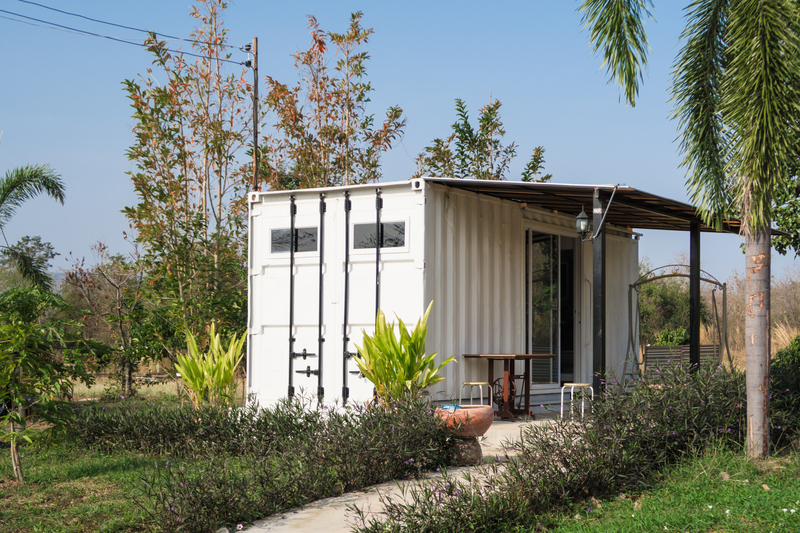Practical Steps for Thorough Hoarder Cleanup and Clutter Reduction Success
Hoarder cleanup and effective clutter reduction can seem like daunting tasks. Clutter not only affects living spaces but can also impact mental and emotional health. If you or a loved one are struggling with hoarding, understanding a systematic approach to cleaning up and reducing clutter is crucial. In this article, we will explore practical steps, proven strategies, and essential tips for a successful hoarder cleanup and lasting clutter reduction.
Understanding Hoarding and Clutter
Before diving into the thorough cleanup process, it's vital to comprehend what hoarding and clutter entail. Hoarding is recognized as a mental health disorder characterized by persistent difficulty discarding or parting with possessions, regardless of their actual value. This often leads to excessive accumulation and dangerous living conditions. Clutter, while less severe, refers to a collection of items in disarray, making spaces unusable or stressful.
A successful clutter reduction plan requires sensitivity, patience, and a detailed action plan. Here, we outline actionable steps for achieving lasting results.

Key Stages in Hoarder Cleanup and Clutter Reduction
- Planning and Preparation
- Sorting and Categorizing Items
- Quick Wins: Addressing Easily Discarded Items
- Tackling Challenging Items with Empathy
- Organizing What Stays
- Cleaning and Sanitizing
- Maintaining a Clutter-Free Space
Step 1: Planning and Preparation
A well-prepared plan is the backbone of all successful hoarder cleanup projects. Without one, the process can feel overwhelming, unfocused, and ultimately unsuccessful.
Assess the Situation
- Walk through the property and make observations without judgment.
- Determine the scope of the cleanup: How many rooms? How severe is the clutter?
- Identify any safety hazards (mold, pests, structural issues).
Set Clear, Achievable Goals
- Establish what a successful cleanup means for you: Is it a livable space? Is it completely clutter-free?
- Break down the process into smaller, measurable tasks for better progress tracking.
Gather Supplies
- Protective gear: gloves, masks, goggles, and appropriate clothing.
- Cleaning tools: brooms, vacuums, trash bags, cleaning agents, bins for sorting.
- Organizational aids: tubs, baskets, shelving units, and labels.
Step 2: Sorting and Categorizing Items
Sorting items is essential for an efficient and effective clutter reduction process. This step sets the foundation for discarding, donating, recycling, or keeping items.
Use the Four-Box Method
- Keep: Items that are essential, genuinely useful, or bring significant joy.
- Donate: Items in good condition that you or the homeowner no longer need.
- Sell: Valuable items suitable for online marketplaces or garage sales.
- Trash: Broken, unusable, or unsanitary items.
Work Room by Room
- Begin with the least cluttered space for easier progress and morale boost.
- Use a checklist to track what's been sorted, what remains, and items to revisit later.
Step 3: Quick Wins - Addressing Easily Discarded Items
To build momentum, focus first on obvious trash or things you know can go. These quick wins provide visible progress, making the rest of the process less overwhelming.
- Empty food containers, old newspapers, junk mail, and broken household items.
- Expired medications, personal care products, or chemicals (dispose of responsibly).
- Recycle paper, plastics, and other materials as appropriate.
Step 4: Tackling Challenging Items--With Empathy
For many, hoarding is tied to strong emotional attachment to certain possessions. Approach this step with patience and compassion.
Use the "Question Approach"
- When was the last time I used this? If it's been years, consider parting with it.
- Does this item bring me happiness or serve a real purpose?
- Could someone else benefit from this? Donation can make letting go easier.
Support and Professional Help
- Friends and Family: Having loved ones assist can provide emotional support and a practical helping hand.
- Professional Organizers/Counselors: Trained experts can offer guidance, create structure, and address underlying issues.
It's vital to respect the emotions involved. Never force discarding; promote gradual progress for lasting clutter reduction success.
Step 5: Organizing What Stays
Once you've narrowed down possessions, it's time for smart organization--a key factor in successful hoarder cleanup.
- Assign everything a "home." Items should have a designated place, reducing the chance for future clutter.
- Use shelves, bins, dividers, and labels for easy access and tidy storage.
- Store frequently used items within reach and seasonal ones elsewhere.
- Implement a "one in, one out" rule to prevent accumulation.
Consider Storage Solutions
- Install closet organizers or modular shelving for efficient use of space.
- Invest in furniture with built-in storage (beds with drawers, ottomans).
- Use clear bins for visibility and stackability.
Step 6: Deep Cleaning and Sanitizing
After decluttering, a thorough cleaning ensures a healthy and inviting environment.
- Dust and vacuum all surfaces, including hard-to-reach corners and crevices.
- Disinfect high-touch areas (doorknobs, switches, kitchen and bathroom surfaces).
- Wash or dry-clean fabrics, curtains, and slipcovers.
- Clean and deodorize carpets and upholstered furniture.
- Address pest or mold problems as needed, possibly calling in professionals.
Step 7: Maintaining a Clutter-Free Space
A clean slate requires ongoing effort. Maintenance is critical for long-term clutter reduction success.
Develop New Habits
- Establish a weekly tidying routine (e.g., spend 10-15 minutes each evening or set aside a few hours on weekends).
- Practice mindful shopping: Before buying, ask if the item is truly needed.
- Implement regular reviews: Revisit stored items every few months to prevent re-accumulation.
Engage Support Systems
- Check in with accountability partners, such as friends or therapists, for encouragement.
- Join community groups or online forums for ongoing motivation and tips.
Overcoming Common Hoarder Cleanup Challenges
The hoarder cleanup journey can present unique difficulties:
- Emotional Resistance: Attachments may make letting go tough. Take breaks, celebrate small victories, and seek support as needed.
- Time Management: Cleanups rarely finish in one day. Set realistic timelines and don't be discouraged by slow progress.
- Physical Limitations: Large projects may require professional or volunteer assistance, especially for those who are elderly or disabled.
- Disposal and Donation Logistics: Research local charities, recycling centers, and junk haulers in advance.
When To Call Professionals for Hoarder Cleanup
For extreme hoarding cases with hazardous conditions or biohazards, it's best to engage professional hoarder cleanup services. These companies offer:
- Expertise in safe, efficient removal and disposal of clutter.
- Proper equipment and trained personnel to handle dangerous materials.
- Compassionate service, respecting the dignity and privacy of those involved.
- Comprehensive solutions, including deep cleaning and repairs if necessary.

Benefits of a Successful Hoarder Cleanup and Clutter Reduction
- Improved Health: Reduced dust, allergens, and pest risks contribute to a safer living environment.
- Enhanced Quality of Life: Clear spaces allow for easier movement, relaxation, and productivity.
- Mental Well-being: Less clutter leads to decreased anxiety and improved mood.
- Restored Relationships: Tidier homes are more welcoming for family and friends.
- Safety: Clear pathways reduce fire risks and accidents.
Summing Up: Your Path to Clutter Reduction Success
Taking on a hoarder cleanup or intensive clutter reduction isn't easy, but with the right strategy, tools, and mindset, it is absolutely possible. Remember:
- Plan ahead.
- Work systematically.
- Treat yourself and others with empathy.
- Enlist help where needed.
- Celebrate every step, however small.
A life free from overwhelming clutter is achievable through practical steps and dedication. Whether you're helping yourself or someone you care about, use these expert-recommended guidelines for comprehensive hoarder cleanup and clutter reduction success. Start today, and reclaim your space for a healthier, happier future.